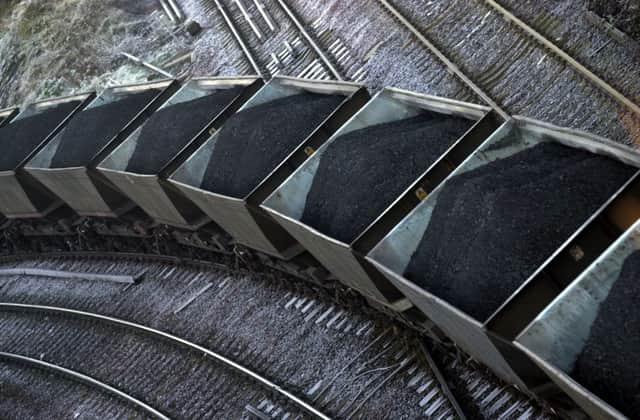David Spaven: Railways can play larger role in delivering the goods


Next year is shaping up as a challenging year for rail freight in Scotland – with the rapid decline in its traditional coal market set to be exacerbated by the closure of Longannet power station. It is therefore very timely that Transport Scotland is currently consulting on a review of strategy for the industry.
In his introduction to the Delivering the Goods consultation, Transport Minister Derek Mackay acknowledges that in the search for new markets, “key to the future success of rail freight is creating an environment where the industry has the space to innovate”. The paper then sets out four key aspects of how rail freight “has a vital role in delivering the Scottish Government’s objectives”: sustainable economic growth; supporting stronger, safer communities; tackling climate change; internationalisation.
Advertisement
Hide AdAdvertisement
Hide AdTo this list should be added the potentially pivotal role of an expanded rail freight system in cutting the substantial burden of wear and tear imposed on Scotland’s trunk road network by heavy lorries.
Scottish Government road investment has prioritised building new roads ahead of maintaining the existing network, but modal switch from road haulage to rail could make a big difference to road surface quality and safety along important corridors such as the A9 and the A82.
Transport Scotland’s consultation paper rightly focuses on sectors where there are special opportunities for rail, such as whisky, the construction industry and forest products. Currently, despite an annual Scottish harvest of seven million tonnes, no timber is carried by rail in Scotland. Previous initiatives have foundered through the lack of suitable modern railheads and the difficulty of securing cross-customer co-operation to build sufficient volumes to fill big, cost-effective trainloads – but a new initiative on the Far North Line in Sutherland aims to make a breakthrough. Led by HITRANS, the regional transport partnership, the project hopes to be a successful realisation of Transport Scotland’s observation that “innovation will be the key to unlocking transportation of timber by rail”.
The prize is safe and sustainable transport of timber, relieving pressure on narrow, fragile roads – and one of the options being examined by HITRANS to achieve that aim is the innovative Non-Intrusive Crossover System (NICS). This novel concept has been developed by a Glasgow-based company, and provides a lower-cost means of connecting an existing main-line track and a planned freight siding. The NICS kit offers much shorter lead-times for completion than for conventional connection, and has a good fit with the timber market in its ability to be easily relocated to emerging harvesting areas.
NICS could also have applications in another sector highlighted in the Transport Scotland consultation, namely the construction industry – where rail’s strengths in transporting heavy commodities such as cement and aggregates can be frustrated by the high costs and long lead-times for installing conventionally signalled siding connections. The ability to tap quickly and cost-effectively into temporary markets could be transformative for rail.
Scotland’s exporting economy is, of course, dominated by whisky, and rail has been moving it in containers from Central Scotland for more than four decades. Fast container trains were a key recommendation of the 1963 Beeching Report, and the 50th anniversary of this crucial innovation was celebrated on 12 November this year. Today, Coatbridge Freightliner Terminal is the largest rail hub for whisky exports – but, in contrast, 100 per cent of the movement of spirits from North of Scotland distilleries to Central Scotland maturation plants is undertaken by road haulage.
The 2013 Lifting the Spirit trial whisky train service from Elgin to Grangemouth was a tangible example of how rail nevertheless has the potential to secure a significant freight modal switch away from the A95 and A9 roads. This sector also exemplifies what Mr Mackay called the importance of creating an environment “where [the industry] can work together for the benefit of its customers, where companies are clear on the benefits of using rail freight and where funders can be assured of optimum value for their investment”.
The Transport Scotland consultation paper documents more than 40 active or potential rail terminals in Scotland, but there are some big gaps on the map – not least in Dundee, one of the largest cities in Britain with no rail freight facilities. Previous attempts to promote the concept of a hub railhead for Tayside at an existing rail site have been frustrated by objections from planners. If rail freight’s substantial untapped potential is to be realised in key locations such as this, then the rail industry, central government and local government will need to work much more closely together to help deliver the goods.
• David Spaven is Scottish representative of the Rail Freight Group, www.rfg.org.uk